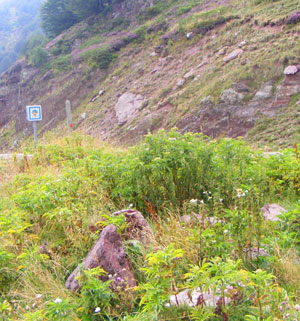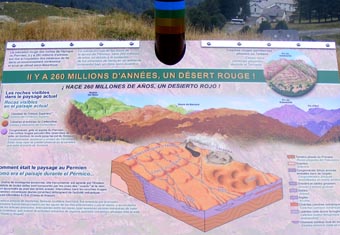Transition Metals
Colour
Transition metals form very colorful compounds. Unlike the compounds made with the metals in groups 1 and 2 of the periodic table (like Na or Mg) which are usualy grey or white, transition metals display lots of different colours. Again, this special property of transition metals is a consequence of having d orbitals.
The colours will depend not only on the metal but also on its oxidation state and on the ligands attached to it .
Familiar colours produced by transition metals include the deep purple potassium permanganate solution (caused by Mn7+), the blue copper sulfate solution (caused by Cu2+) and the red colour of blood, soil, kidney beans and rust (caused by Fe3+).


Red rocks (containing Fe3+) at the Pirineo Mountains beteen France and Spain and on the right the sign describing the red desert (desert rouge)
